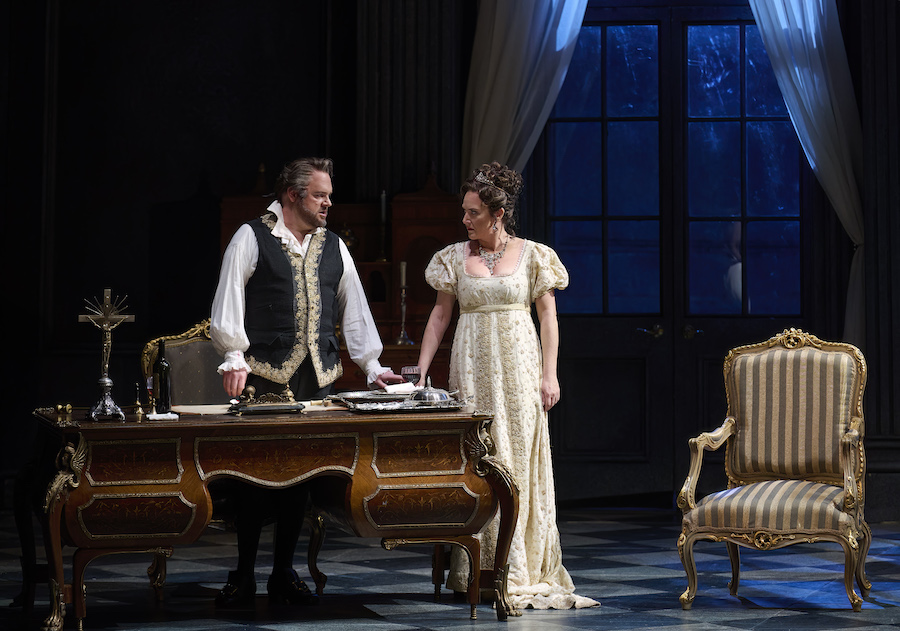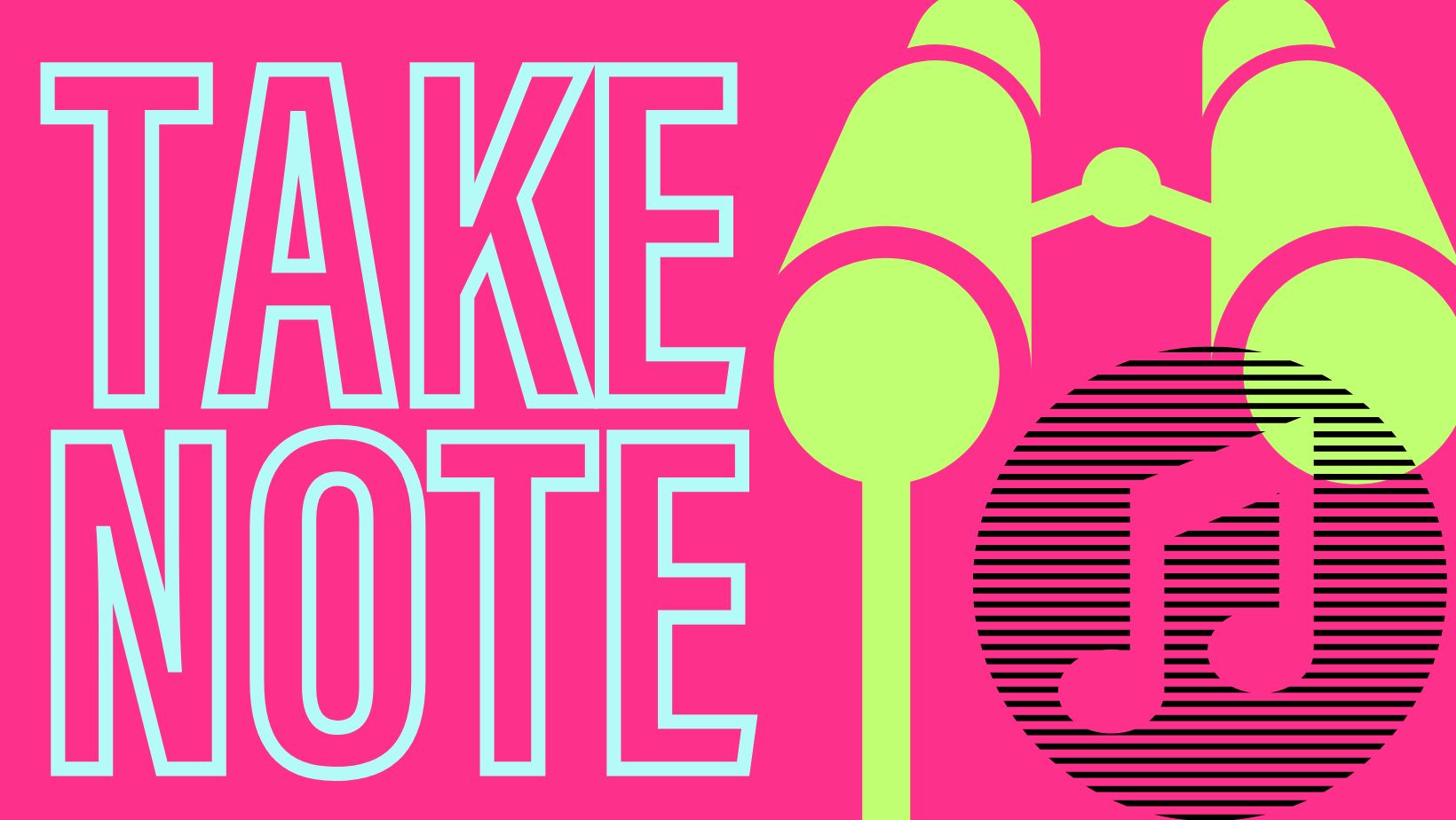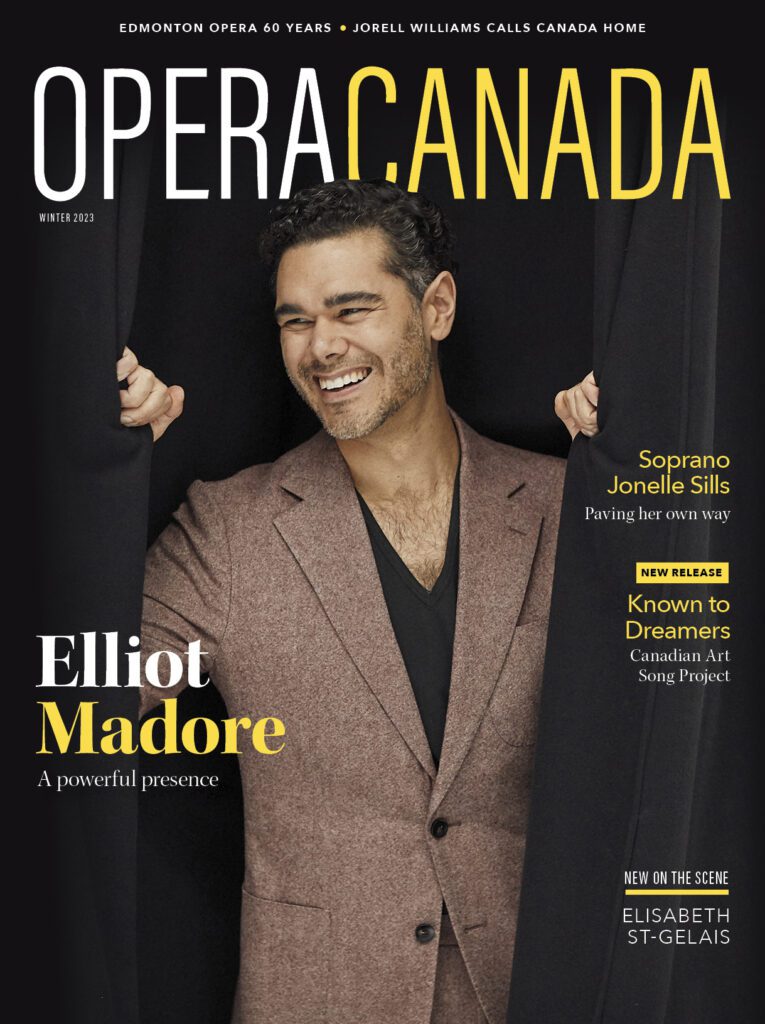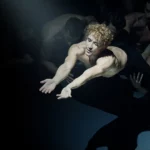The late American musicologist Joseph Kerman famously dubbed Puccini’s Tosca “that shabby little shocker,” though his pithy characterization is actually the opening salvo of a critical assault on the composer’s final opera, Turandot. Kerman had already had his way with Tosca in earlier pages of Opera as Drama, decrying its “café-music banality” and largely dismissing Puccini as a manipulator of shallow emotion rather than a true musical dramatist. Even so, he had to concede the enduring popularity of Puccini’s work, though with the snide qualification that “it is admired nowadays mostly in the gallery.”
The positive opening night reception of the Canadian Opera Company’s latest staging of Tosca on May 5 showed admiration for Puccini’s work more evenly spread through every section of the Four Seasons Centre for the Performing Arts, from the prime orchestra seats right up to the top of the 5th Ring. That Tosca has an enduring capacity to fill seats is evident from the regularity of its appearance at the company. This is the COC’s 13th staging of the opera—the first was in 1957, a year after Kerman’s book appeared—and the fourth iteration of the production Scottish director Paul Curran first mounted for the Four Seasons Centre in 2008. With such a familiar work in such a familiar staging, the challenge is ever to bring it alive in a fresh and compelling way.
Wednesday, May 17, 2023 at 6pm
Women’s Art Association, Toronto, ON
An Event To Support Opera Canada
TICKETS HERE
Curran’s staging, with Kevin Knight’s period sets and costumes nicely lit by David Martin-Jacques, is a known quantity that works effectively for the big public conclusion of Act 1 and the more intimate action of the rest of the opera. The COC Orchestra and Chorus (and Canadian Children’s Opera Company) are by now comfortable with both the music and the staging and reprise their parts with predictable skill. If this Tosca revival is to stand out with its own distinctive appeal, the onus is primarily on the conductor and the principal and comprimario singers, many in this case new to the production and some to the company.
In his COC debut, Italian conductor Giuliano Carella served notice from the four ominous opening chords that are a recurring musical motif for the villainous Scarpia that this Tosca would unfold at a long-breathed pace and give the orchestra full dynamic rein. The result was a reading that loudly accented some of the big moments and played up the vivid colouring of Puccini’s rich orchestration (I don’t think I’ve heard the Rome church bells at the top of Act III sound so clearly). But even as the volume undoubtedly upped the emotional and dramatic ante at times to thrilling effect, it also created some balance issues between stage and pit that remained unresolved on opening night.
Kerman hardly bothers with Act II in his critique of the opera, which seems an egregious omission because the relationship between the diva and her evil would-be lover is the primary focus of the work; Tosca’s relationship with the painter Cavaradossi is secondary. For all its grainy, low-fi quality, the 1964 broadcast of Act II from Covent Garden with Maria Callas and Tito Gobbi (link here) is a striking rebuttal to Kerman; it’s as dramatic as anything in opera, a power play and psychological battle that builds in musical intensity until climaxing in Scarpia’s violent death and Tosca’s ironic belief that she has won.
This COC revival goes some way to undermining Kerman’s position, too, though not as decisively. Scottish baritone Roland Wood is a refined and aristocratic Scarpia, with a finely honed, elegant baritone that perhaps needs more of a snarl to capture the depth of the dangerous character’s depravity. Wood is a more youthful Scarpia than is usual, but convincing in a villainy that is more insidious than overweening. He is well partnered in the company debut of Irish soprano Sinéad Campbell-Wallace, a lighter, less dramatically voiced soprano than we usually hear in the role, but a forceful actress in command of a lovely instrument. Her account of “Vissi d’arte” as she pleads with Scarpia was especially affecting, and her attention to detail notable in both her vocal and physical characterization of the heroine. Wood and Campbell-Wallace play off each other well, though the expansive pacing sapped some of the tension out of a conflict that came across as more cerebral than visceral.
Campbell-Wallace is also convincing as the impetuous, easily jealous lover of Cavaradossi, sung in another company debut by Italian tenor Stefano La Colla. The one-dimensional role is one of Puccini’s least interesting tenor heroes, but it’s blessed with two of the most popular arias in opera. La Colla has the right Italianate style and timbre for the music, though tends to stand and deliver with a directness and volume that recall the trumpeting approach of earlier Italian tenors like Mario del Monaco. Still, his accounts of the two warhorse arias were enthusiastically received.
The remaining comprimario roles were well handled, with an ebullient reprise of the buffo role of the Sacristan by Italian bass Donato di Stefano, menacing turns by Canadian tenor Michael Colvin and bass-baritone Giles Tomkins as Scarpia’s minions, Spoletta and Sciarrone, and a vivid debut for American bass-baritone Christian Pursell as the traumatized political prisoner, Angelotti. Completing the vocal cast were COC Ensemble Studio bass baritone Alex Halliday as (in this production) a sympathetic jailer and Soya Avramova, a member of the Canadian Children’s Opera Company, who sang the plaintive song of the Shepherd Boy offstage.
All in all, opening night of this Tosca revival had many elements to recommend it in the musical performance and in the staging—certainly enough to give the lie to Kerman and please the audience—though it struck me nonetheless as a performance in which the whole did not quite emerge as something greater than the parts.
The COC production of Tosca runs to May 27. American soprano Keri Alkema takes the title role in three performances and (May 7, 11, 13).
Related Content ⬇
Opera Canada depends on the generous contributions of its supporters to bring readers outstanding, in-depth coverage of opera in Canada and beyond. Please consider subscribing or donating today.
CANADIAN OPERA COMPANY
MAY 5 to 27
PUCCINI TOSCA
CAST AND CREATIVE
Conductor Giuliano Carella
Assistant Conductor Simone Luti
Director Paul Curran
Assistant Director Marilyn Gronsdal
Set & Costume Designer Kevin Knight
Lighting Designer David Martin Jacques
Assistant Lighting Designer Sarah Mansikka
Intimacy Director Lisa Stevens
Fight Director Matt Richardson
Price Family Chorus Master Sandra Horst
Stage Manager Stephanie Marrs
SURTITLES™ Producer John Sharpe
SURTITLES™ Writer Gunta Dreifelds
Tosca Sinéad Campbell-Wallace
Cavaradossi Stefano La Colla
Scarpia Roland Wood
Spoletta Michael Colvin
Sacristan Donato Di Stefano
Sciarrone Giles Tomkins
Cesare Angelotti Christian Pursell
A Jailer Alex Halliday
Shepherd Boy Zoya Avramova
With the COC Orchestra and Chorus
Cavaradossi Stefano La Colla
Scarpia Roland Wood
Spoletta Michael Colvin
Sacristan Donato Di Stefano
Sciarrone Giles Tomkins
Cesare Angelotti Christian Pursell
A Jailer Alex Halliday
Shepherd Boy Zoya Avramova











